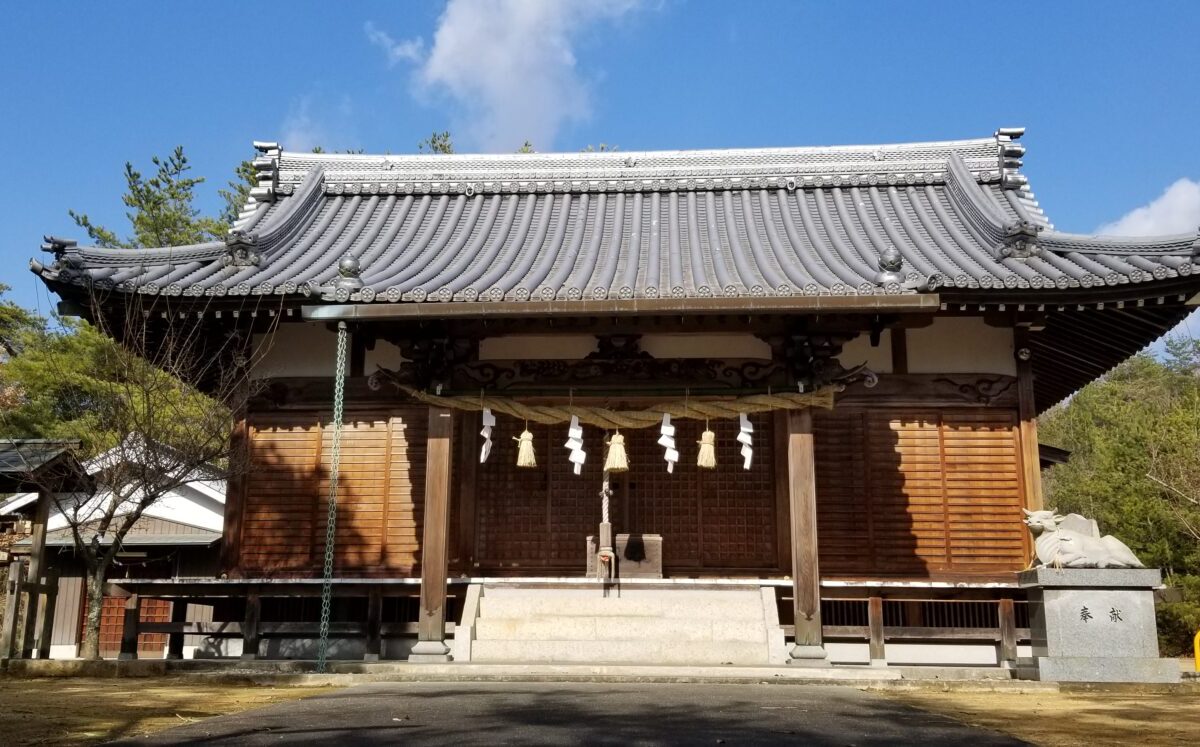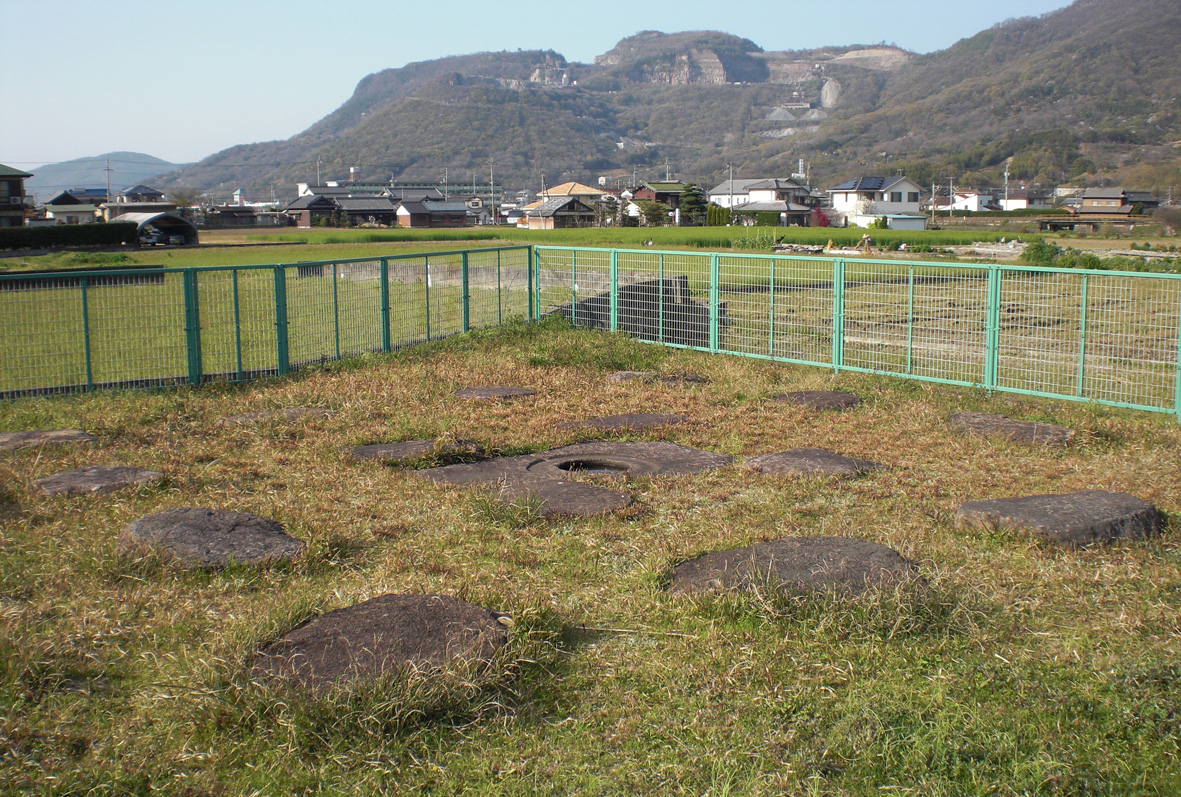Sugawara no Michizane Appreciation Course (1-day course) (by car)

-
About 13 minutes
01 Sakaide Station
-
Have a great trip!
About 13 minutes
-
-
About 13 minutes
02 Ushinokoyama Tenmangu Shrine (Matsuyama no Yakata)
-
It seems that Sugawara no Michizane had a villa called Matsuyama no Yakata in a scenic location. It is said to have been here at Ushinokoyama, and later a shrine was built to enshrine him, which is the origin of this place.
-
Ushinoko Rock
It’s located in a bamboo grove, about a 5-minute walk up the mountain path near the housing complex.
There is a legend that when Sugawara no Michizane frequently visited “Matsuyama no Yakata” in this area, a divine messenger in the form of an ox descended from heaven onto this rock to protect him.
About 13 minutes
-
-
About 4 minutes
03 Ishii Tenmangu Shrine
-
Ishii Tenmangu Shrine: This place is also called Nanzan. Provincial Governor Sugawara no Michizane often visited here to compose poems, which are included in “Kanke Bunsō”. It is said that Middle Counselor Fujiwara no Ienari founded this shrine in memory of these historic sites.
About 4 minutes
-
-
About 2 minutes
04 Kaihoji Temple Pagoda Ruins
-
Based on the excavated tiles and the style of the pagoda, it is considered to be a temple site from the Hakuho period and one of the oldest temples in the prefecture. In 1970, an investigation was conducted at the site, which was traditionally believed to be the bell tower. The original foundation stones and pagoda base were discovered, leading to its designation as a prefectural cultural property for being the best-preserved pagoda site in the prefecture.
-
Monument to the Sanuki Provincial Capital Site
This is the site of the Sanuki Provincial Capital, which was established after the Taika Reform with an area of five cho (approx. 545m) square, functioning as the political and cultural center of ancient Sanuki. Famous provincial governors such as Ki no Natsui, Fujiwara no Yasunori, and Sugawara no Michizane were appointed here and left many accomplishments. Place names related to the provincial office, such as Kakinouchi, Chotsuki, Jotsuki, Shoso, and Seido, still remain in this area, breathing life into about 1,400 years of history.
About 2 minutes
-
-
About 15 minutes
05 Kiyama Shrine
-
Kiyama Shrine is a prestigious shrine known as a Shikinaisha (an officially recognized shrine in ancient times). It enshrines Kangushi-o, who is said to have ruled Sanuki Province. Kangushi-o is a legendary figure, the son of the 12th Emperor Keiko, who defeated an evil fish that was ravaging the area and remained in Sanuki, thus becoming known as Sarure-o. The shrine grounds also include Amagoi Tenmangu, which enshrines Sugawara no Michizane.
-
Ameuke Tenmangu Shrine
The shrine grounds also include Ameuke Tenmangu, which enshrines Sugawara no Michizane.
About 15 minutes
-
-
About 13 minutes
06 Myojinbara Ruins
-
In the southeastern part of Kiyama, in an area known as “Tako no Atama” (Octopus Head) that juts out into the plains, there are several large rocks scattered about, including one called Eboshi-iwa. It is said to be the place where Provincial Governor Sugawara no Michizane read prayers to the god of Kiyama and performed a rain-making ritual.
In 886 (Ninna 2), Michizane was appointed to Sanuki Province from the capital. During the great drought of 888 (Ninna 4), he performed a rain-making ritual here at Myojinbara to the god of Kiyama. As a result, it is said that rain fell magnificently, and the people were greatly pleased. The dance performed by the people in gratitude was later passed down to posterity in the form of nembutsu dancing. Myojinbara is also said to be the original location of Kiyama Shrine and has been considered a sacred place where gods descend since ancient times.
About 13 minutes
-
-
About 12 minutes
07 Kuroiwa Tenmangu Shrine
-
In 886 (Ninna 2), Sugawara no Michizane was appointed as the governor of Sanuki and came to this land. One year, during a prolonged drought when the ponds had dried up and the villagers were suffering, Michizane climbed Kiyama and prayed for rain at the shrine. Immediately, they were blessed with abundant rain, and the villagers danced with joy to welcome Michizane to this place. To honor Michizane’s virtue, a shrine was later built here and named Kuroiwa Tenmangu.
About 12 minutes
-
-
08 Sakaide Station (End point)
![Sugawara no Michizane Appreciation Course (1-day course) (by car) - [Official] Sakaide City, Kagawa Tourism & Travel Guide | Odekake Kakehashi Sakaide](https://sakaide-kankou.com/en/wp-content/themes/sakaide-kankou-theme/src/img/svg/hero-banner-black.svg)





















